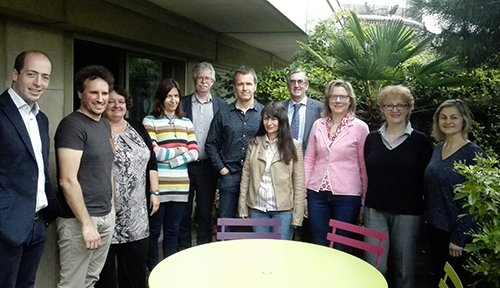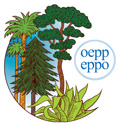
Expert Working Group for the RNQP Project – Fruit (including hop) and grapevine Sector
Paris, 2017-05-02/04
In the context of Regulation 2016/2031 of 26 October 2016 on protective measures against pests of plants, and its list of pests to be published in an implementing act in the following 3 years, EPPO has contracted a 2-year project with the EU Commission on Regulated Non-Quarantine Pests (RNQPs).
RNQPs are defined in two International Standards for Phytosanitary Measures (ISPM 16: Regulated non-quarantine pests: concept and application and ISPM 21: Pest risk analysis for regulated non-quarantine pests). More specifically article 36 of EU Regulation 2016/2031 defines RNQPs as pests with a clear taxonomic identity, present in the European Union territory, transmitted mainly through specific plants for planting, whose presence has an unacceptable economic impact as regards the intended use, and where feasible and effective measures are available. Article 37 of EU Regulation 2016/2031 regulates RNQPs for professional operators.
The pests/entries that may fulfill that definition, and for which the specification requires the assessment of the relevance of the RNQP status, are those currently listed within the EU Marketing Directives on reproductive material, plus some proposed by the Annex Working Group (section 2) of the EU Commission and mainly coming from Annex IIA2 of EU Council Directive 2000/29/EC.
Objective of the project
The objective of this project is to propose a list of RNQPs for the EU. In addition, this list may serve as a basis for other EPPO member countries to establish their own regulations. In order to propose such a list of RNQPs, the work has been divided into two phases:
- Phase 1: to define a screening methodology
- Phase 2: to apply the methodology to specific pests

Participants
Current achievement: application of the screening methodology for the ‘Fruit (including hop) and Grapevine’ Sector
As the screening methodology was agreed in 2016 (phase 1), EPPO is now applying it to pests attacking specific crops or groups of crops, with the aim of proposing lists of RNQPs for them (phase 2). Six 'Sector Expert Working Groups' (SEWGs) have been consituted to work on the following crops or groups of crops: 1) seed potatoes; 2) forestry; 3) fruit (including hop and grapevine); 4) agricultural plants; 5) vegetables and 6) ornamentals.
The ‘Fruit (including hop) and Grapevine’ SEWG met in Paris on 2017-05-02/04. As revision of the list of pests, risk management measures and thresholds already available in Commission implementing directive 2014/98/EU is not part of the RNQP Project (the reason being that this Marketing Directive was revised recently), the assessment focused on pests listed in the Marketing Directive for Grapevine as well as on pests proposed by the Annex Working Group (section 2) of the EU Commission for Fruit, Grapevine and Hop plants for planting.
The SEWG agreed a list of RNQPs, as well as recommendations concerning tolerance levels and risk management measures for these pests. In the replies to the RNQP Questionnaire, many additional pests were proposed for a RNQP listing for grapevine: this would require further evaluation in the coming years by the EU Commission or EPPO.
Useful references
- Commission implementing directive 2014/98/EU of 15 October 2014 implementing Council Directive 2008/90/EC as regards specific requirements for the genus and species of fruit plants referred to in Annex I thereto, specific requirements to be met by suppliers and detailed rules concerning official inspections.
- Council directive 68/193/EEC of 9 April 1968 on the marketing of material for the vegetative propagation of the vine.
